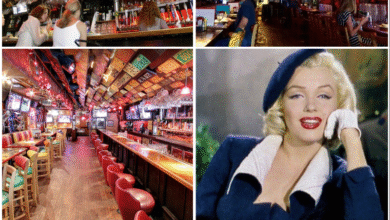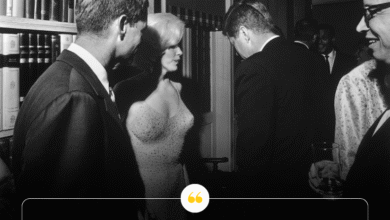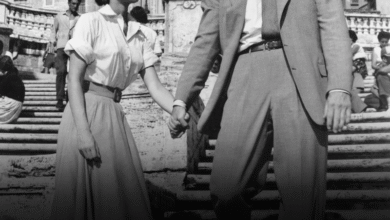Marilyn Monroe Gets Candid About Her Most Iconic Performance—’I Was Terrified!’
OPINION: This article may contain commentary which reflects the author's opinion.
Marilyn Monroe, one of the most iconic figures in Hollywood history, often spoke about moments that shaped her career and personal life. Known for her beauty, talent, and charisma, Monroe’s legacy has been defined by both her public persona and the private reflections she shared in interviews. One particular moment in her life, however, stands out as a defining experience, both for her and for the world that watched her. Monroe herself recalled this as her “big moment,” one of the most memorable and nerve-wracking events of her career—the famous performance of “Happy Birthday, Mr. President” to President John F. Kennedy in May 1962.
Context and the Lead-Up to the Iconic Moment
Marilyn Monroe was already an international star by the time she was invited to perform at a Democratic Party fundraiser on May 19, 1962, at Madison Square Garden in New York. The event was held to celebrate President John F. Kennedy’s early birthday, and the invitation to Monroe, a close friend of the Kennedy family, was seen as a major coup for both her career and the political event.
Despite her fame, Monroe was not immune to anxiety. In her 1988 interview with The Guardian, an edited transcript of a Life magazine interview, Monroe reflected on the intense nerves she felt leading up to her now-iconic performance. “I was scared to death. I was shaking all over. I was just terrified. I was so nervous that I was shaking,” she admitted. The personal vulnerability she expressed in these words highlights the emotional weight the event carried for her, despite its high-profile nature.
The Emotional Weight of the Performance
The performance was both a professional milestone and a deeply personal experience for Monroe. She recalled the moment feeling almost surreal, with the audience’s reaction filling the room with an electric, almost tangible silence. “I felt like a hush fell over the audience, like an embrace,” she recalled, underlining the intimate connection she felt despite being surrounded by thousands of eyes. At the same time, she feared the possibility of failure: “What if no sound comes out?” she nervously wondered.
This moment was not just about the performance itself but also about its emotional resonance. Monroe recalled introducing her former father-in-law, Isadore Miller, who was in his 70s and an immigrant, instead of greeting the president formally. This gesture added another layer of personal significance to the event, as it allowed Monroe to connect with her heritage and family in a way that transcended the star-studded environment.
The Controversial Impact and Corporate Backlash
The performance became a global sensation, and Monroe’s outfit—a tight-fitting, rhinestone-studded beige dress that seemed to barely cover her—was part of what made the moment unforgettable. However, it also caused significant controversy. Fox executives, who had a vested interest in her public image, were reportedly displeased with her attire and the attention it garnered. This displeasure was compounded by Monroe’s personal and professional challenges at the time, which included her struggles with her mental health and ongoing tensions with the studio.
Nevertheless, the performance remained a career-defining moment for Monroe, propelling her further into the public consciousness. It marked a significant shift in her status as an actress and as a public figure, reinforcing her role as both a Hollywood icon and a controversial, complex personality.
Monroe’s Reflection and the Enduring Legacy of the Moment
Monroe’s reflection on this moment underscores its place in her memory as more than just a professional high. It was, in her own words, “a big moment,” one that combined personal fear, immense public pressure, and the complex dynamics of fame. It also marked one of the final highlights of Monroe’s career, as she continued to struggle with both her personal life and her professional trajectory until her tragic death in 1962.
The significance of the performance was also heightened by the aftermath, with Monroe’s dress and her relationship with the Kennedys continuing to make headlines for years. The performance not only cemented Monroe’s legacy as one of the most iconic figures of the 20th century but also made it clear that she was more than just a pretty face—she was an artist who could connect deeply with audiences, even in moments of extreme vulnerability.
Conclusion: The ‘Big Moment’ that Defined an Icon
Marilyn Monroe’s recollection of her performance for President Kennedy stands as one of the most iconic moments in Hollywood history. While other moments from her career, such as her famous scene in The Seven Year Itch or her roles in films like Some Like It Hot, also contributed to her legendary status, the Happy Birthday performance holds special significance. Monroe’s nerves, the emotional connection she felt with the audience, and her personal reflections on the event all point to it being the “big moment” she recalled throughout her life.
Her openness about the event provides valuable insight into the vulnerability and complexity of an actress who, despite her public image, faced profound challenges. Monroe’s legacy, shaped by both her triumphs and her struggles, endures through moments like these, marking her as one of the most unforgettable figures in entertainment history.



